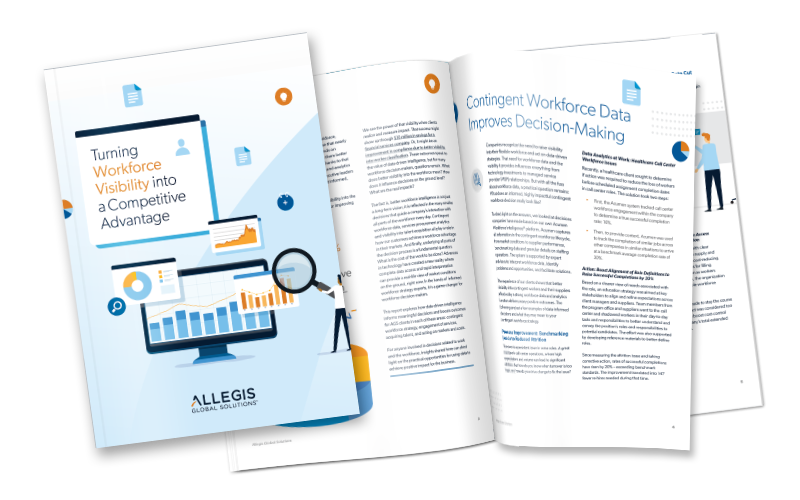Outsourcing series: How strong is your current workforce solution?

Over the next few months, I’m publishing an outsourcing series designed to make you think about your current workforce solution from a cost, time and quality standpoint. The goal is to ensure you're using the best possible solution for your talent needs. Read on to start the series and learn more about if your workforce solution is currently functioning competitively.
According to the Aberdeen Group, businesses with a formal recruitment process strategy in place are 40% more likely to be deemed 'best-in-class.' Can you confidently declare that your current talent acquisition strategy places you in this category?
To do so, you need to know that:
- Your recruitment efforts are cost and time-effective. On average there is a 45-55% cost reduction when you outsource compared to keeping the recruitment process in-house.
- Your hiring activity is positioning your business reputation effectively and competitively in the market from both a candidate and a customer perspective.
- Your strategy is delivering the quality and cultural fit candidates your business needs.
- You can compare your talent acquisition strategy to the efforts of your competitors. 74% of our candidates are recruited from targeted companies.
- Your recruiting efforts are contributing positively to tangible business performance and results. On average, there is a 68% reduction in time-to-fill and 64% reduced agency hire by outsourcing your workforce solution.
1. Cost: Do you know the true cost of your recruitment efforts?
Can you say with certainty that you know the true cost of your organization's talent acquisition efforts? While you may be aware of headline costs, are you able to keep track of the various hidden costs that impact recruitment spend? Both time and quality (more on these below and in the upcoming series) have a significant bearing on cost that need to be considered.Other factors that impact cost per hire range from:
1. Attrition rates, which can impact productivity, training costs, overall morale and ultimately attrition
2. Ineffective hiring manager processes, which can extend the hiring lifecycle and adversely impact the attraction of high caliber talent
3. Individual behaviors, which can lead to losing a candidate to a competitor or injure your employer brand through a poor candidate experience
Unless you have visibility into these hidden costs, it is hard to say with any certainty that your cost per hire is as effective as it could be. If you're not confident in these factors, it may be time to consider investing in outsourcing part of or all of your recruitment."The status quo may not always solve your problems. You need to be able to evaluate objectively what the right model is. And it's important to remember that there is no stigma surrounding outsourcing - if anything, it's likely to be cheaper, more efficient and with greater results," Craig McGrory, AGS Director of Business Development explains.
2. Time: How timely is your talent acquisition?
When it comes to assessing the timeliness of your workforce solution, you need to ask yourself these questions before your CFO does:1. Do you have data to back up your notion that your hires are reaching full productivity quickly?
2. Is there empirical evidence to show that your talent acquisition strategy is timely?
3. Do you have any benchmarks to compare your efforts against those of your competitors, as well as industry best practice?
If you can't confidently answer any or all of these questions, how do you know you're doing well? Outsourcing your talent acquisition strategy can help you to more accurately monitor and improve each of these time-related metrics (more to come in upcoming series).According to the Centre for Economics & Business Research, businesses that fail to fill a position within the first month have a 57% chance of having to wait for three months or more before filling the role. Even if your headline cost per hire is low, both cost and quality will suffer if your time-to-fill and time-to-productivity are not up to scratch.
"While undoubtedly important, cost per hire should not be your only priority. A low cost per hire is counterproductive if it has been achieved at the expense of your time-to-fill and time-to-productivity. This will have a negative knock-on effect on quality, which is ultimately how your talent acquisition strategy will be judged," explains Alfonso Nunez, AGS Executive Director Client Solutions for APAC.3. Quality: The key differentiator
While cost and time are important, quality is the key differentiator in assessing the effectiveness of talent acquisition.This is where the true value lies in outsourcing your workforce solution. Ultimately, cost per hire or time-to-productivity are of secondary importance, provided you have hired the best person for the job, capable of giving the best return per capita.
However, while the most important consideration, quality is also the hardest to assess. Perceptions of quality are subjective, with little empirical data available to measure against, and can vary significantly within a business. Without sufficient benchmarks, it is even harder to gauge how the quality of your hires compares to your competitors. If you’re struggling to define quality, consider the elements that contribute to quality and begin by measuring those. We will look further into defining quality later in the series.
By outsourcing your recruitment, all elements of your workforce management strategy can be monitored on a deeper level, prompting you to think carefully about which metrics actually matter to your organization when it comes to determining candidate suitability and quality of hire.
So, how can you be sure that your talent acquisition strategy is best-in-class in terms of cost, time and quality? If you'd like to learn more about how to answer this question, check out the next blog post for this series that will focus on cost. In the meantime, feel free to connect with me on LinkedIn for any questions about our workforce solution!




